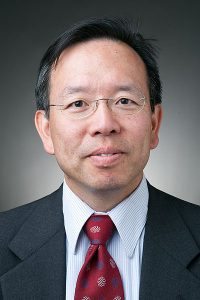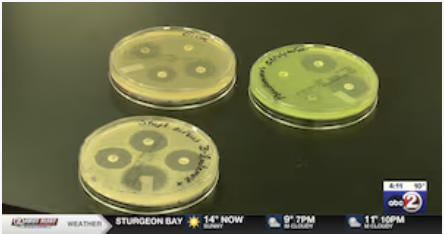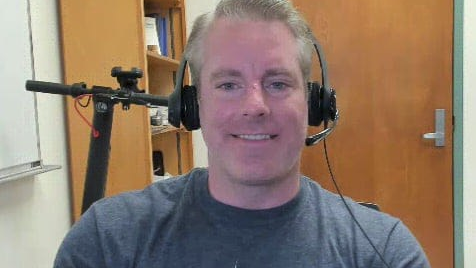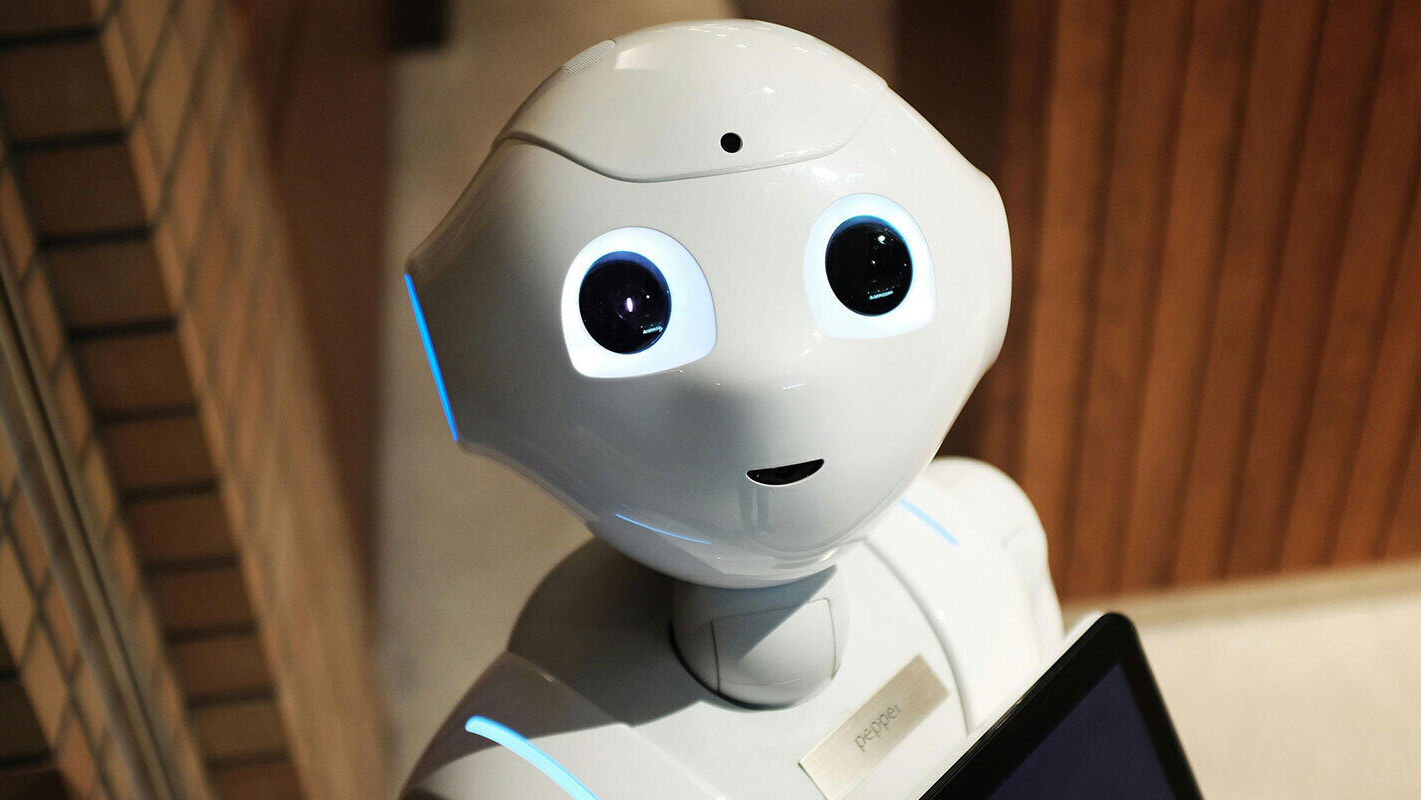Origins of Life… and John Yin
John Yin has been working for years on characterizing virus growth and infection spread with computational models, studying antiviral cellular defense, and battling viruses with new strategies. His leadership in chemical engineering and virology as well as in WID’s Systems Biology theme has made him a prolific researcher. But starting now, Yin is ready to open a new chapter, one that has been on his mind since the beginning of his career: the Origins of Life.
Yin’s interest in origins extends all the way from before the genesis of biology up through our own complex societies and even beyond, into the future of life and humanity. But to understand how Yin arrived at his ambitious study of the origins of life, one must first understand the origins of John Yin.

John Yin
Throughout his education and career, Yin fostered interests and talents in both science and humanities. Along the way, philosophical musings have informed his scientific reasoning and music has been an integral part of his life. At Columbia College, Yin earned bachelors degrees in both chemical engineering and liberal arts. While at Columbia, Yin worked three summers in molecular pharmacology at the National Institutes of Health Cancer Institute. “That’s where I first learned what a pipette was and how to run a gel. It was fun to learn about molecules and how you can study these things that you can’t see,” says Yin.
Yin continued his education at the University of California Berkeley, where he studied how green plants protect themselves from toxic metals. He used these studies to inform his synthesis of novel materials that bind cadmium; the work resulted in a patent for treatment of cadmium-polluted water. The real value for Yin was in how he found the answers he needed by consulting the natural world. He says, “nature is really remarkable in its ability to come up with solutions. I knew that I wasn’t smart enough to invent the chemistry, but I also knew that nature would evolve solutions that would work. I thought, ‘wouldn’t it be neat if I could learn more about how nature does this kind of design through mutation and selection.’” Ideas about the origins and development of life began to form in his head as the chemical and biological foundations were laid.
“Nature is really remarkable in its ability to come up with solutions.” — John Yin
Near the end of his graduate education, Yin attended a series of lectures from physical chemist Manfred Eigen, famous for developing techniques to measure “immeasurably fast” reactions. Eigen was at that time approaching evolution from a physical chemical perspective, writing equations to try to describe evolution in the simplest terms and studying “test-tube evolution” with bacteriophages, viruses that parasitize bacteria. Yin immediately read Eigen’s papers and heard all of the lectures he could from the German scientist and, knowing it was a long-shot, wrote to Eigen hoping to work with him.
That was the beginning of a four-year postdoc engagement for Yin at the Max Planck Institute for Biophysical Chemistry in Göttingen, Germany where he studied evolution in the laboratory. In one system, Yin examined the spreading infection of a simple virus, observing how mutants would beat out the wild type virus. His first faculty position was at Dartmouth College’s engineering school, where he continued to study evolution of bacteriophage viruses but expanded his research to include mammalian viruses as well.
After a few successful years, Yin was invited to join the Chemical Engineering department at UW-Madison, which boasts one of the best virology campuses in the world and hosts some of the top students and researchers. Ultimately, he became the leader of the Systems Biology theme at the brand new Wisconsin Institute for Discovery, where he has continued to be a prolific researcher in chemical and biological engineering. Scientific curiosity about the origins of life has always lingered, but remained on the backburner as other priorities reigned.
But now it is time for a change. Yin’s focus is evolving; he is delving back into thought experiments from his time as an undergraduate, and lab experiments he began as a postdoc in Germany — he is ready to investigate the origins of life. The starting point for Yin is in systems chemistry, a relatively new field that describes use of chemistries that mimic biological systems: they can replicate molecules, they can adapt, and they can evolve. In contrast to systems biology, which uses quantitative methods to break down existing complex systems, systems chemistry builds up complexity from basic chemical building blocks. According to Yin, “sometimes people think about origins of life as a spark, and then there’s life. But the whole idea of systems chemistry is that there are a lot of simpler chemistries that begin to have properties of biological systems that must have gradually evolved towards something as complex as a cell. It’s a continuum, not a spark.”
“It’s a continuum, not a spark.” — John Yin, on the Origins of Life
Yin is particularly interested in complexification. “It seems that with these living systems that as long as you keep feeding them energy and they’re replicating they become more complex and more robust, less subject to environmental fluctuations.” Yin believes that complexification is a principle that connects all life back to the simple chemistry that can be done in a test tube. He traces complexification from simple chemistry to a cell, from a single-celled organism to a multicellular organism, and from individuals to ecosystems and societies. Studying and understanding complexification in the laboratory will provide fundamental insights into the development of life.
A related notion is that of generation and adaptation of information. As molecules replicate, they must be able to carry forward information to adapt and complexify. Says Yin, “part of replicating is to figure out what parts of your environment enable you to replicate and to codify that in what molecule you are so that if that environment continues you are very efficient at using those resources, but if the environment changes you are somehow able to adapt.” To adapt, information relevant to the new environment needs to be preserved, but information that is no longer pertinent can be jettisoned in favor of developing new function based on new information.
Yin sees information emerging even in the most basic chemistry. When just two or three amino acids are combined, dimers and trimers form in non-equal proportions, meaning that certain combinations are favored by the chemistry. As more components are added, chemical interactions set off chains of complexification as the system begins to evolve. In this way, Yin can chemically create strings of information in the test tube.
Yin and his colleagues are just in the beginning stages of this initiative, with the first few papers in the area expected to be published next year. But looking to the future of this research, Yin believes that there are major potential impacts and applications across a range of industries and fields, from important insights into chemistry and biology, to development of catalysts, to possible human health applications like treatments for viruses, cancer, and other ailments. Most of the people working on these ideas are on the edges of other fields and Yin is hoping to bring them together to synthesize ideas and define directions for the coming years.
The prospect of studying the origins of life has Yin invigorated – so invigorated that this past summer, he found himself more involved in every stage of research, including preliminary lab work, than he had been in many years. So why is he finally embarking on this path now? “You live only once, and maybe I’m realizing that if you want to do something, you ought to do it; the right time is now,” says Yin. The timing is also good from a scientific perspective: “seeing where the field is now, I think we can make some interesting contributions.”
— Nolan Lendved





